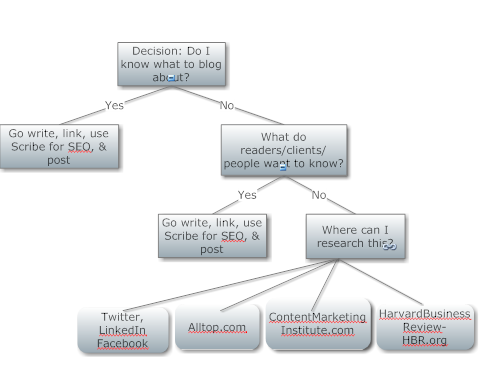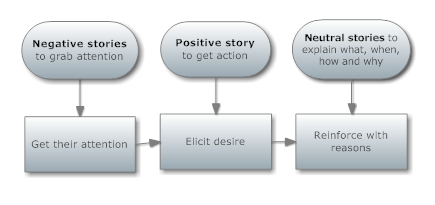 What do you do when you’re stuck and can’t write on your blog? Here are some blog writing tips. I diagrammed them out.
What do you do when you’re stuck and can’t write on your blog? Here are some blog writing tips. I diagrammed them out.
It’s the rainy season here in Mexico – a great time to do a lot of reading and writing. At least, that’s what one would think…But…I’m having trouble. I’m stuck. I’ve got Blogger’s Block. (Yes, even experienced bloggers can get stuck from time to time.)
Solution? Start writing about where I’m at, what’s going on here, and then tie it in with something useful and relevant to readers. That’s one blog writing tip that usually bails me out.
Source of problem? I’ve been blogging so much lately for my clients that I’m dried up and stale for my own blog.
So what? I’ll bet some of you have the same blog writing problem or similar. You give your all to your clients, then when it comes time to do your own content marketing you’re as dry as toast without butter.
It’s no wonder the cobbler’s children have no shoes.
What to do? One blog writing tips is to “Just do it,” just start writing and see what comes out. You may surprise yourself. One of my clients tells me he doesn’t write that much anymore. He finds it easier to hook up the Web cam and post a video clip. Hmmm…wait a sec.
Just by starting to write, I had to trace my thought processes to find what I usually do when I am stuck. This time I diagrammed it out using SmartDraw.
It’s interesting, no? Much easier to show than tell, and you can clearly see my four favorite resources for breaking bloggers’ block.
I will now go walk my talk and come up with some good blog posts.
And if you’re still having trouble, I’ve got more tips in a great little package you can have called Time Saving Tips for Smart Bloggers, audio, transcript, PDF handouts. You can solve your blogging blues with all the tips in this program.
What resources do you use to find ideas? Hit the comment link and share.














